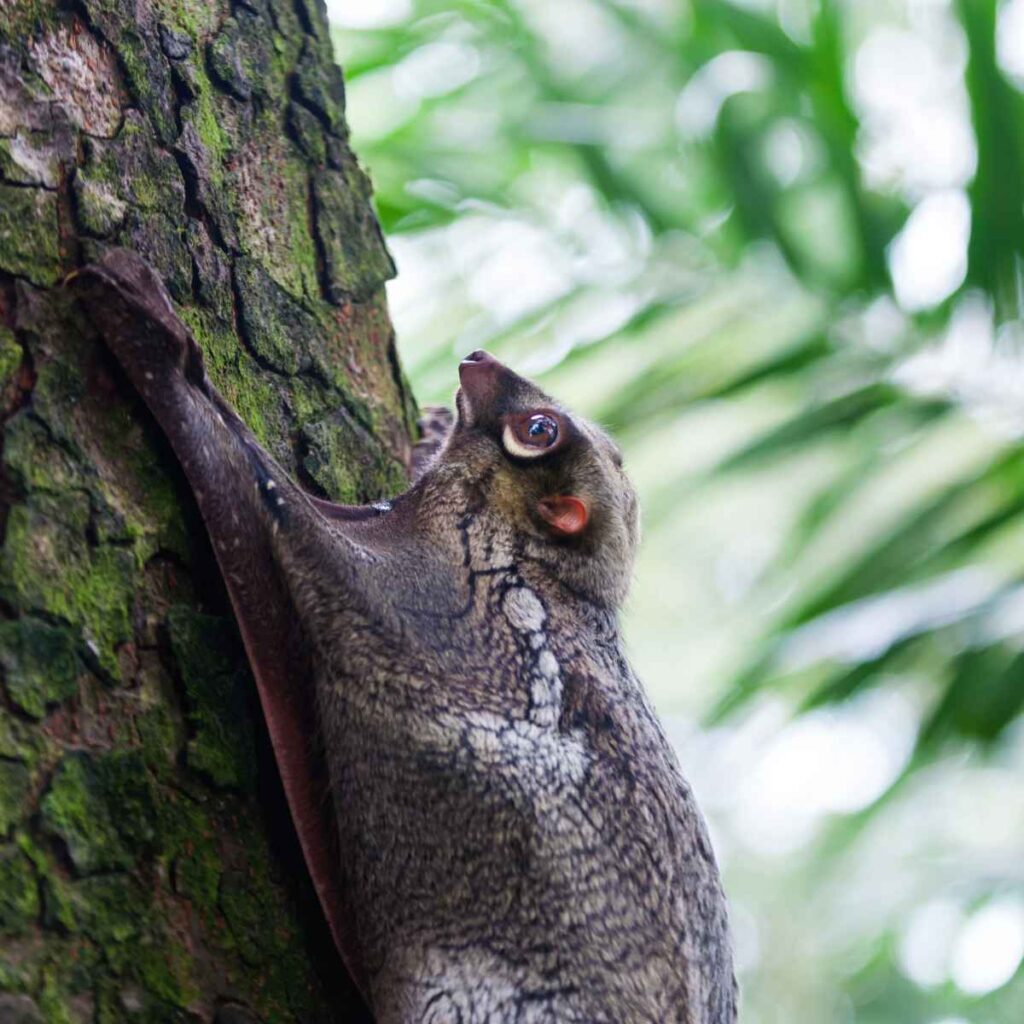Last Reviewed and Updated on February 7, 2023
Colugos are one of the rare mammals that can be seen gliding through the sky, and they are really good at it. Let’s take a closer look at this fascinating animal, from the basics and all the way to some of the most fun and unique facts about colugo.

About Colugo
Colugos, commonly known as flying lemurs, are mammals native to Southeast Asia. They belong to the family Cynocephalidae in the order of Dermoptera.
There are two species of colugos;
- The Philippine flying lemur
- The Sunda flying lemur
They are arboreal, nocturnal animals, spending most of their time in tree canopies.
Colugos are herbivores; their diet consists mainly of leaves, shoots, flowers, sap, and fruit.
Their mating behavior isn’t well researched; however, a female gives birth to a single young, sometimes twins.
Both species of colugo are threatened due to habitat loss.
Interesting Facts About Colugo
What is unusual about colugo? Read on and learn some interesting facts about colugo; these animals have quite a few unique features.

1. Colugos are not lemurs, nor do they fly
Their common name, the flying lemur, is misleading as these animals aren’t lemurs or capable of true flying. They are in their own family, Cynocephalidae, order Dermoptera, and they glide in the sky and do not fly.
The only mammals capable of true flying are bats.
2. Colugos can glide through great distances
While they can’t fly, they are one of the most capable of all gliding mammals. Their fur-covered membrane, which allows them to glide through the air (called a patagium), is connected from the face through all paws and their tails. They are able to glide in the air for distances up to 660 ft / 200 meters.
3. They have a quasi-pouch
Carrying young in a pouch is something commonly seen in marsupials (kangaroos, bandicoots, bilby, koala…). Colugios are placental mammals, but they raise their young similar to marsupials; the young are born underdeveloped and spend the first months of their lives clinging to their mother. Female colugos curl their tails and form a quasi-pouch with their patagium to protect their young.
4. Young colungo are tandem gliders
Colugos are excellent gliders; even when mothers raise their young, this doesn’t change. A female colugo can carry her young and glide from tree to tree without any issues.
5. Their incisor teeth are comb-shaped
Colugos have one rather unique thing in common with lemurs; similar to lemurs, colugo also has comb teeth in its lower jaw. Each comb-shaped tooth has up to 20 tunes. These teeth are used for grooming.

Fun fact: their second upper incisor tooth has two roots, which is unique in mammals.
6. They have webbed feet
Webbed feet in animals are most often an evolutionary adaptation to living near or in water that makes swimming easier. But colugo is most likely not capable of swimming. Their webbed feet help them glide in the air.
7. Colugos are slow and clumsy on the ground
They may be expert gliders and adequate climbers (they hop rather than climb), but they are slow and clumsy when they are on the ground.
8. Their closest living relatives are primates
It was once considered colugo was closely related to bats due to its membrane. However, their closest relatives are primates.
9. They hang upside down when feeding (and traveling)
When they travel along branches, and when they feed, they hang upside down.
10. Coluga have carnivorous-like teeth but are herbivores
Their teeth resemble that of a carnivore, although colugos are completely herbivorous.
